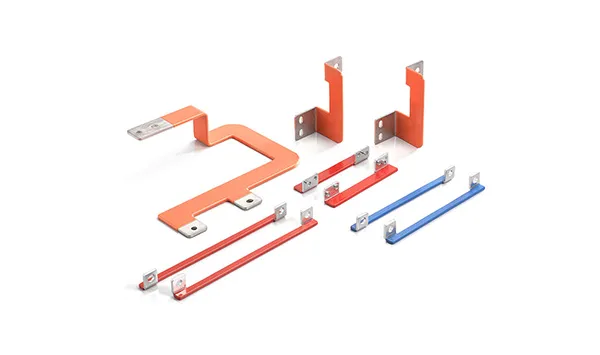In power transmission, distribution systems and industrial equipment, busbars are the core carriers of power distribution, and their material selection directly affects system performance, cost and long-term reliability. Copper (Cu) and aluminum (Al) are the two most mainstream busbar materials on the market, but their characteristics are significantly different. This article will analyze the advantages and disadvantages of the two from the dimensions of conductivity, mechanical properties, corrosion resistance and cost, so as to help you accurately match your needs.
Conductivity is the core indicator for measuring busbar performance. The conductivity of copper (IACS standard) is as high as 100%, while aluminum is only about 61%. This means that under the same cross-sectional area, the current carrying capacity of copper busbars is about 30% higher than that of aluminum busbars. For high current density scenarios (such as data centers, new energy vehicle charging piles, etc.), copper busbars can significantly reduce heat generation, reduce power loss, and improve system efficiency.
However, the lightweight characteristics of aluminum give it an advantage in scenarios where weight reduction is required (such as photovoltaic power stations and wind power towers). By appropriately increasing the cross-sectional area of the aluminum busbar (about 1.6 times that of copper), the lack of conductivity can be compensated while keeping the weight lighter.
The mechanical strength of copper (tensile strength of about 200-250 MPa) far exceeds that of aluminum (about 70-95 MPa). This makes the copper busbar less likely to deform in environments with high vibration and frequent thermal expansion and contraction (such as rail transit and ship power systems), and the connection points are more stable, reducing the risk of failure caused by looseness.
The aluminum busbar is soft in texture, and special tools and transition joints (such as copper-aluminum composite terminals) are required during installation to avoid increased contact resistance caused by the oxide layer. The copper busbar can be directly crimped or welded, which makes construction easier and has higher long-term reliability.
Copper will naturally form a dense copper oxide film in the air, which effectively prevents further corrosion. Even in high humidity and salt spray environments (such as coastal power stations and chemical plants), the copper busbar can still maintain stable performance.
Although the aluminum oxide film (aluminum oxide) has a certain protective effect, it is loose in texture and prone to electrochemical corrosion in humid or acidic and alkaline environments. Therefore, aluminum busbars often need to be tinned on the surface, coated with an anti-corrosion layer, or fully insulated, which increases the complexity and cost of the process.
Short-term cost: Aluminum has a significant price advantage. In the current market price, the price of aluminum busbars is only 30%-40% of that of copper busbars. For projects with limited budgets or weight sensitivity (such as low-voltage distribution cabinets and long-distance overhead lines), aluminum is a more cost-effective choice.
Long-term cost: The low resistance characteristics of copper busbars can reduce power loss by about 5%-15%, saving electricity bills in long-term operation; its high durability also reduces maintenance frequency. Calculated over a 10-year period, the comprehensive cost of copper busbars in high-load scenarios may be lower than that of aluminum.
Preferred copper busbar:
Places with high reliability requirements (hospitals, data centers, nuclear power facilities);
Compact design requirements (such as new energy vehicle battery packs, 5G base stations);
Equipment with high frequency of start and stop or large impact current (inverter, electric welder).
Preferred aluminum busbar:
Photovoltaic power stations and wind power projects with priority on lightweight;
Low-voltage distribution system (current ≤ 630A);
Short-term use or budget-sensitive scenarios (temporary power supply, small workshops).

Copper and aluminum busbars each excel in their own domains, and the choice hinges on your project’s unique needs: performance, budget, environment, and scalability. Whether you prioritize the unmatched conductivity of copper or the economical versatility of aluminum, both materials deliver safe, efficient power distribution when paired with expert engineering.
Ready to find the perfect busbar solution? Contact our team today for a customized quote and let us help you strike the right balance between performance and cost.
GET A QUOTE